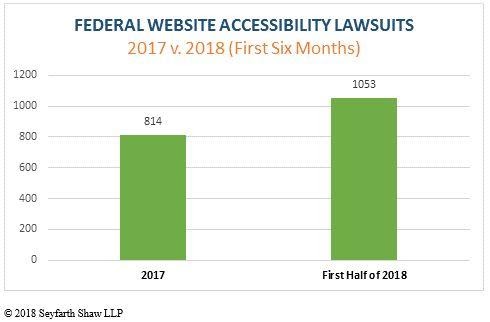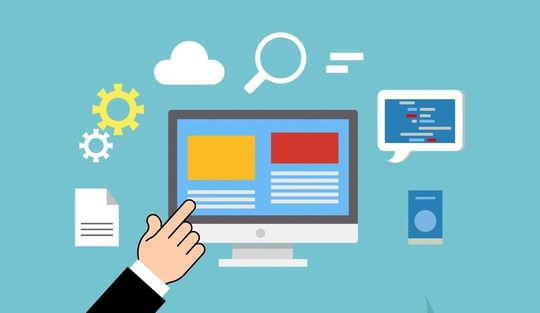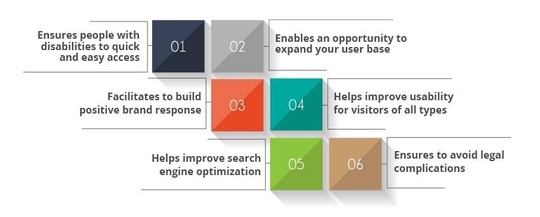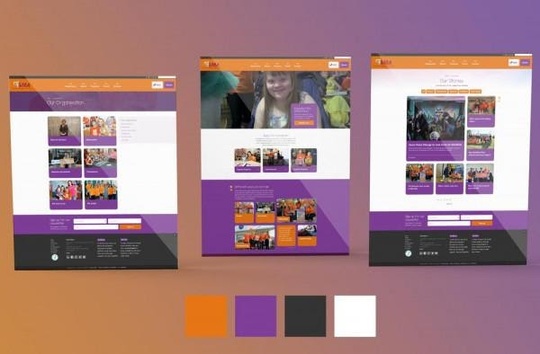Why Web Accessibility Should Be Your Prime Concern in the Present Era
Tim Berners-Lee, W3C Director and inventor of the World Wide Web, says:
"The power of the web is in its universality. Access by everyone, regardless of disability, is an essential aspect."
Today, the web has turned into an indispensable resource that covers every aspect of human lives. To gain full access to diverse fields, such as healthcare, government services, employment, education, entertainment, or online purchasing, you must access the web.
This makes it all the more important for web developers to enhance accessibility for all. An accessible website provides an equal UX, reaches a broader base, and brings a competitive edge to the forum.
An article published in Forbes quotes a survey that 71% of users with disabilities will leave a website that is not accessible. It is essential to understand the phenomenon of disabilities before you craft your web design strategies.
What are disabilities and their types?
Essentially, disability is a condition or a situation that hinders you from doing something you could smoothly perform in the absence of that.
CDC defines disability as a condition of the body or mind (impairment) that makes it more difficult for the person with the condition to do certain activities (activity limitation) and interact with the world around them (participation restrictions).
Disability has the following three categories:
- Permanent Disability - When an individual is completely disabled. Example: deaf, blind, etc.
- Temporary Disability - It is a mental or physical disability that interferes with your responsibilities for a short period
- Conditional/situational Disability - When a person cannot do something due to their circumstances, like a slow internet connection
Pew Internet Project survey conducted by Princeton Survey Research Associates released a surprising insight that 54% of the adults living with disabilities go online. This figure busts an age-old myth of disabled web users being a minority.
If you are still in the fuzz on whether to pursue the accessibility plan for your site, here are a few reasons to convince you:
Accessibility is good for SEO and Usability
It won't be false to state that accessibility and usability are directly proportional to each other. The two serve the same purpose of optimizing the web experience for all prospects.
However, it is crucial to point how accessibility is not one-dimensional. It is a combination of several factors meant to convert your web traffic. From landing page design to email marketing and checkout options, every page must follow an accessible structure. Lack of a proper checkout system, for instance, may result in shopping cart abandonment and negative leads.
The Usability Evaluation Basics by the US Department of Health and Human Services is a useful set of guidelines covering accessibility and web-design ideas:
- Intuitive Design - Users grab the site structure and navigation basics
- Ease of Learning - Users understand the motive and to-do tasks on the site
- The Efficiency of Use - Tasks take less time to complete
- Memorability - Users can start from where they left off
- Subjective Satisfaction - Users love your portal
- Error Severity and Frequency - Check if users make errors during navigation, and what is their frequency?
Interactive Accessibility reports in one of its surveys that 56.7 million Americans are living with a disability. It reveals by 2060, the number of people 65 or above will increase to 98 million.
This number indicates that if your website is inaccessible, you can potentially exclude 20% of the population from converting to your site. This percentage is only going to grow if you overlook accessibility for a long time.
Hence, between being accessible for your visitors and thinking about your future audience, applying web accessibility initiatives should help with SEO directly and in-directly.
Accessibility keeps lawsuits at bay
Although there is no straightforward set of legal requirements for web accessibility, it does not mean your business will not face a lawsuit.
The Internet provides global access to information, education, stores, financial institutions, audio, and video but often remains restricted or dependent on assistive devices for thousands of people. Noting this issue, countries around the world are addressing digital access issues through legislation. Some nations deploy current civil rights or human rights to protect access to websites for disabled communities.
Meanwhile, like the US, other countries have standards to unify web development and allow the world to use web-based solutions with globally accepted protocols. We recognize these standards as the World Wide Web Consortium (W3C).

Failure to comply with this set of guidelines can result in expensive and time-consuming lawsuits. Seyfarth Shaw documented in its 2018 report that plaintiffs filed more website accessibility lawsuits in federal court for the first six months of 2018 than in all of 2017.
The number has multiplied due to increasing awareness among the public.
Accessibility enhances your reputation
Everyone reaps the rewards when a website is user-friendly. Access to the Internet is right. It is not a privilege for those living a perfect life. We must fight for the rights of our disabled fellows as much as we can. So as a business owner or a corporate executive, you should be proactive with finding a web accessibility solution.
As you incorporate it into every level of your planning, it is vital to endorse how 100 percent accessibility on the Internet is rare. There will always be some parts of a page that may not be accessible to a person, no matter how much time and effort is spent to adorn the UX.
When you infuse accessibility in your web design, your market repo takes a dramatic hike. Your visitors tend to recommend your forum to their fellows because of the remarkable experience it offers.
Take the KidzWish website as an example. They seem to be a strong advocate of an inclusive design. Their portal adds value for differently-abled kids and offers multiple methods to interact with interface components.
Parting Notes
The entire blog compels us to conclude on a single note - Web accessibility is the need of the hour!
Whether you are a start-up or an established entity, you must make your site accessible and fix the flaws that limit the users. People with disabilities spend half-trillion dollars annually (US Census Bureau). This fact should be enough to pay instant attention to improving the accessibility of your website.
We hope that soon you will rock your customers' hearts with accessible solutions!




